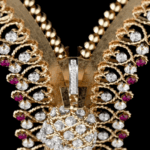In modern society, as people’s aesthetic awareness has increased, jewelry has gradually shed its utilitarian characteristics to become a tool for expressing emotions. In jewelry design, materials play a crucial role, serving as one of the foundations for transforming inspiration into design.
Texture, as an essential characteristic of materials, can provide people with rich visual and tactile experiences, more accurately showcasing the primordial feel of natural substances.
“Texture” refers to the surface material effect formed by the organizational structure of natural or artificial materials or by deliberate organizational design. In jewelry design, designers can use texture to express their ideas, such as simulating natural textures through specific techniques or by utilizing the inherent texture of materials.
Thus, the application of texture in jewelry design has a back-to-basics effect. The selection and application of texture in jewelry design play a vital role in expressing design concepts and enhancing aesthetic appeal.
I. The Beauty of Texture in Craftsmanship
The beauty of texture in jewelry craftsmanship is reflected in multiple aspects, including but not limited to metal surface textures, metal engraving techniques, gold inlay techniques, and granulation techniques.
Moreover, modern jewelry design often pays less attention to the preciousness of materials, thus utilizing more fibers, plastics, and resins to express texture and aesthetics. For instance, the interweaving of fibers allows us to feel the internal composition of plants, while the colors and textures of plastics and resins bring us the vitality of life.
1.Creating texture through metal surface treatment techniques


American jeweler Cadar launched the Shell jewelry series, drawing design inspiration from founder Michal Kadar’s childhood memories of collecting seashells on Tel Aviv beaches. The Shell gold earrings use a satin polishing technique to create shallow three-dimensional patterns on the gold shell surface, giving it a layered texture reminiscent of seashells washed by ocean waves.
The Shell gold ring employs a relief technique to create a three-dimensional, shiny structural pattern on the gold shell surface. These two pieces recreate the natural texture of seashells through different techniques, making one feel as if strolling through summer sunlit seawater.
2.Silk Dyeing Technique
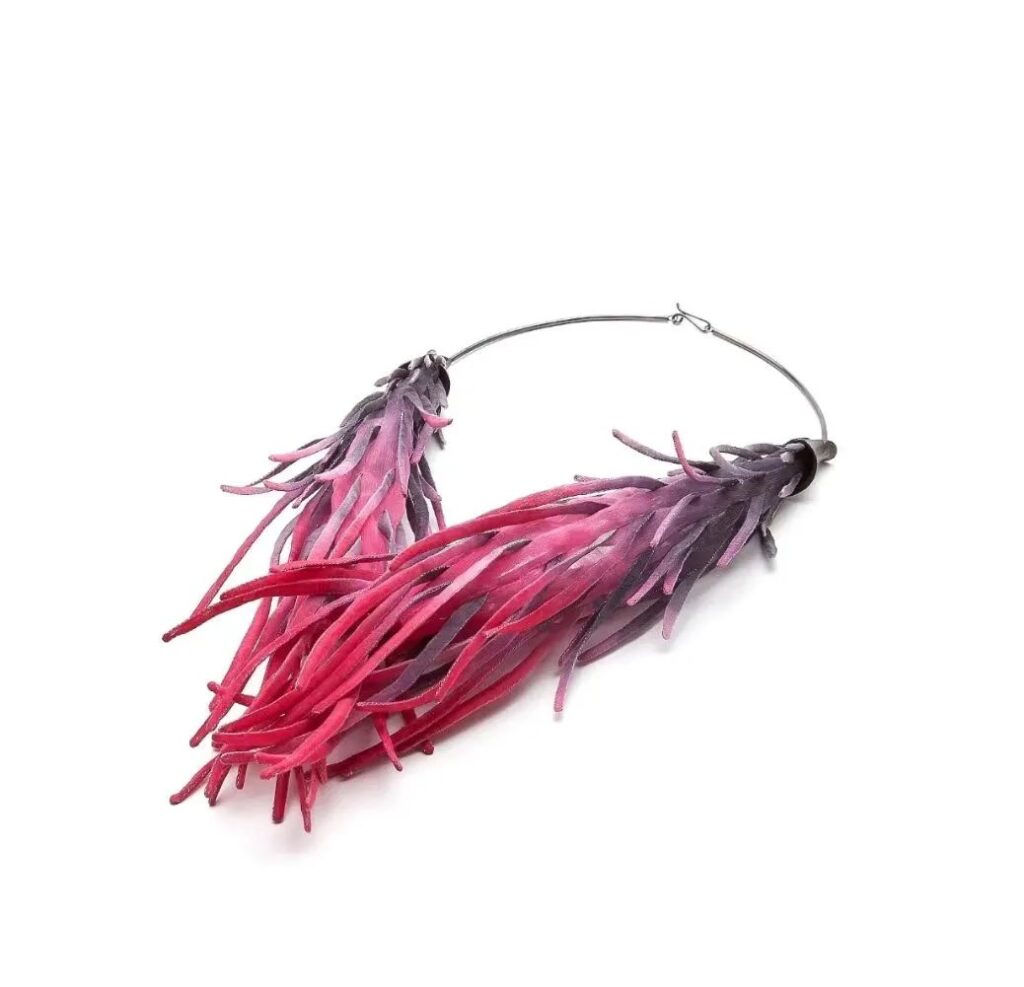
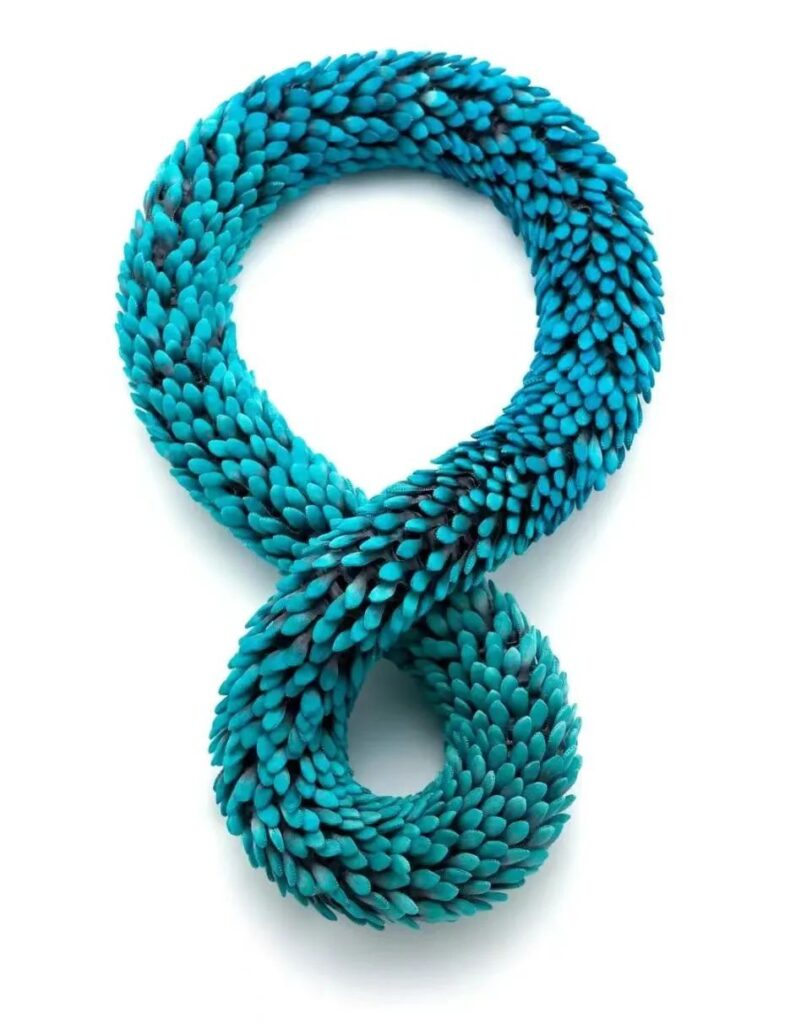
Korean artist Jounghye Park primarily uses fibers as the creative material for her jewelry designs. She is deeply interested in the composition of plants and coexistence with nature, which led to the creation of series such as “Root” and “Circularity”. “Root-pink2” employs a dyeing technique and is made of silk and 925 silver. “Circularity1” also uses a dyeing technique and is crafted from silk, brass, and plastic.
Both pieces utilize silk to express the texture of plants, radiating infinite vitality and energy.
3.Ceramic Plasticity and Painting Techniques
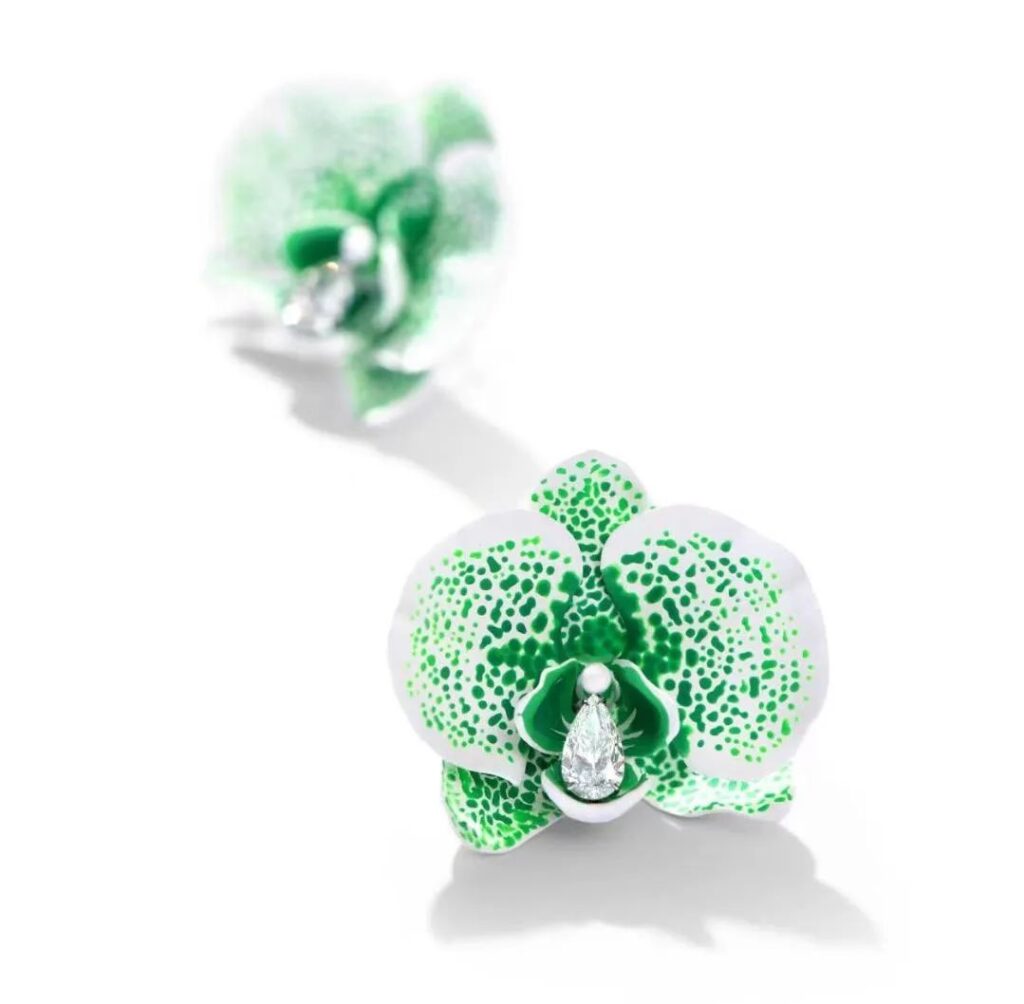
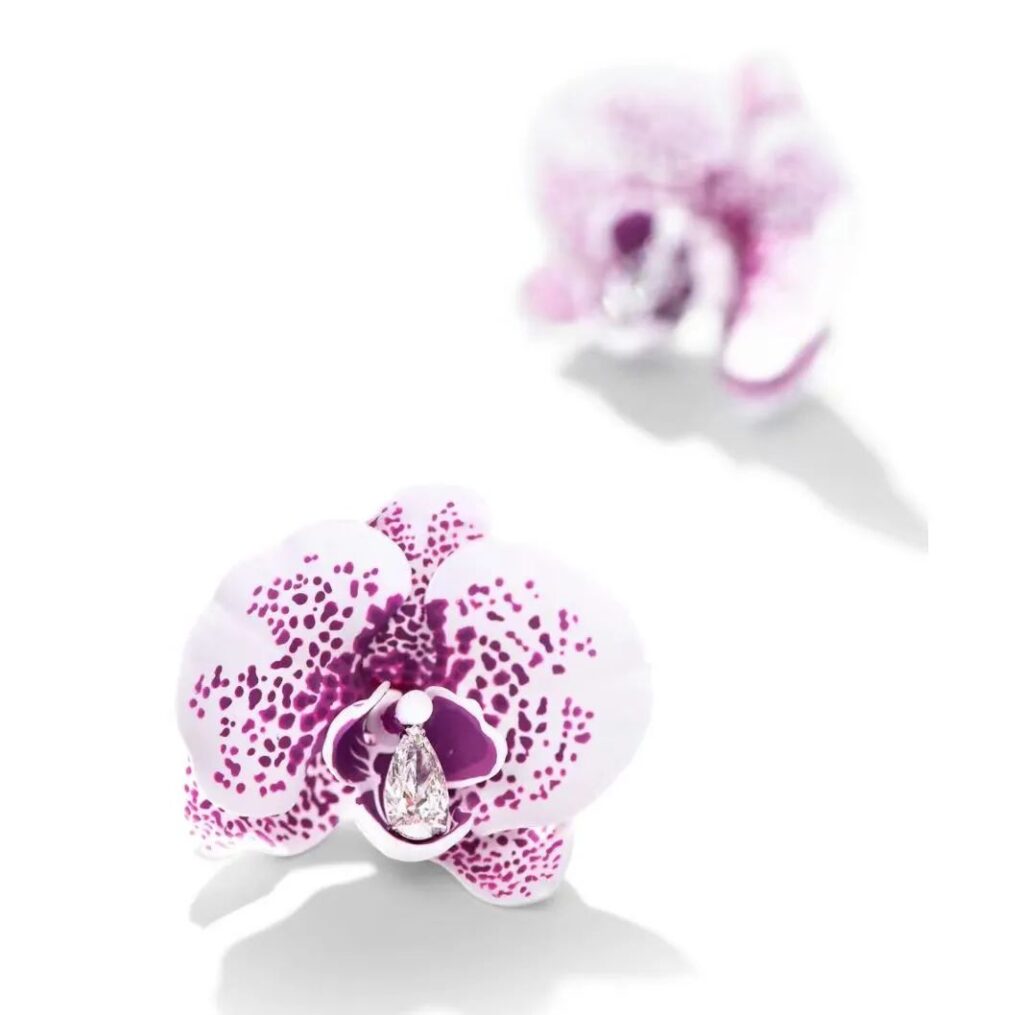
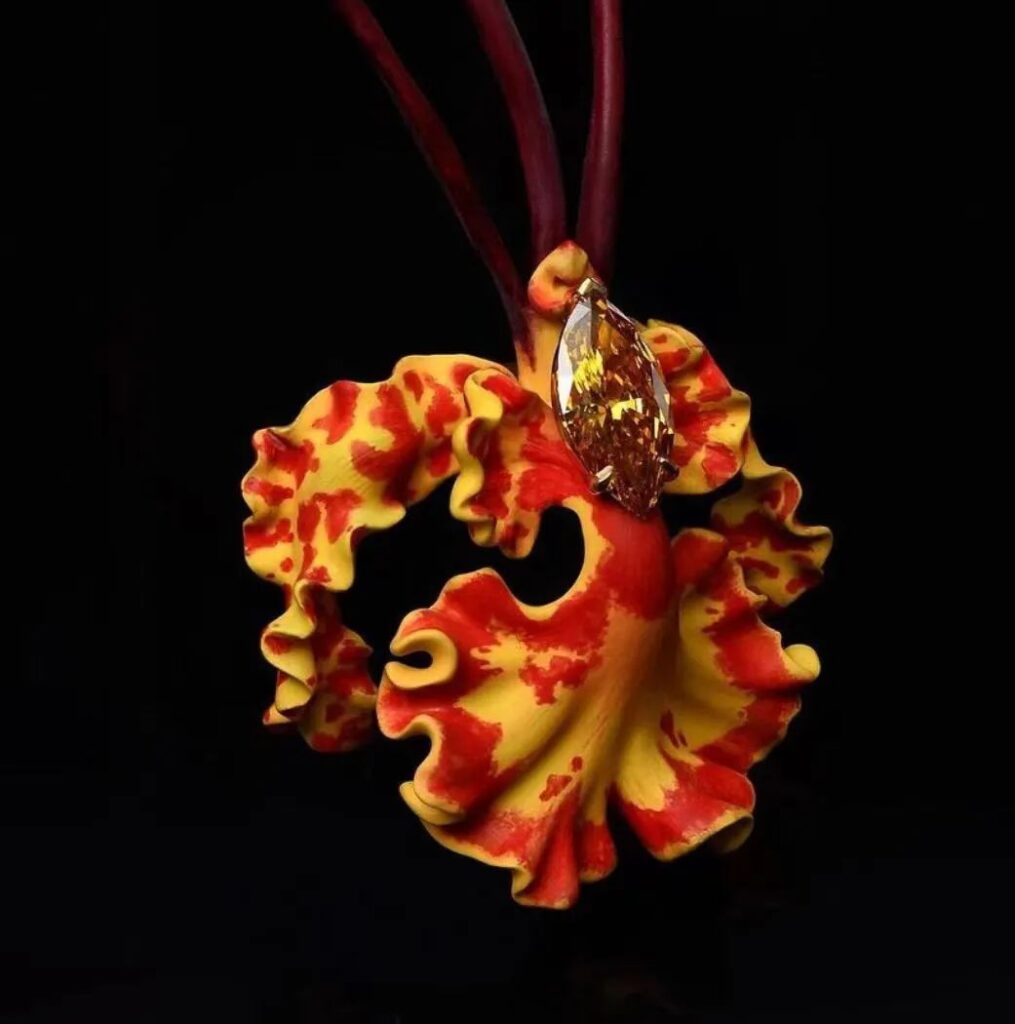
French designer Emmanuel Tarpin’s high jewelry series “Orchidées” draws inspiration from orchids, known for their rich colors and diverse shapes. The series employs colored ceramics and lacquer to depict the colors and textures of flower petals.
The Orchidée Phalaenopsis butterfly orchid-themed earrings use ceramic to create the orchid’s petals and sepals, while the stamen is set with a pear-shaped diamond over 1.3 carats as the main stone. Purple and green spots adorn the rounded petals, cleverly mimicking the natural texture of butterfly orchid petals.
The Cattleya Orchid brooch features a 2.2-carat olive-cut yellow diamond at its center, showcasing excellent color gradation. It uses gold and alternating red and blue tiger stripes to represent the texture of the Cattleya orchid.
II. The Inherent Beauty of Material Textures
The inherent characteristics of materials, such as smoothness, patterns, colors, transparency, and structure, can all serve as elements in creating textural features. For example, the uneven grain of wood can evoke a sense of rusticity through visual and tactile perception. The beautiful iridescence in pearls, the distribution of pyrite in lapis lazuli, and the patterns in malachite all create visually appealing textures.
1.The Beauty of Wood Texture
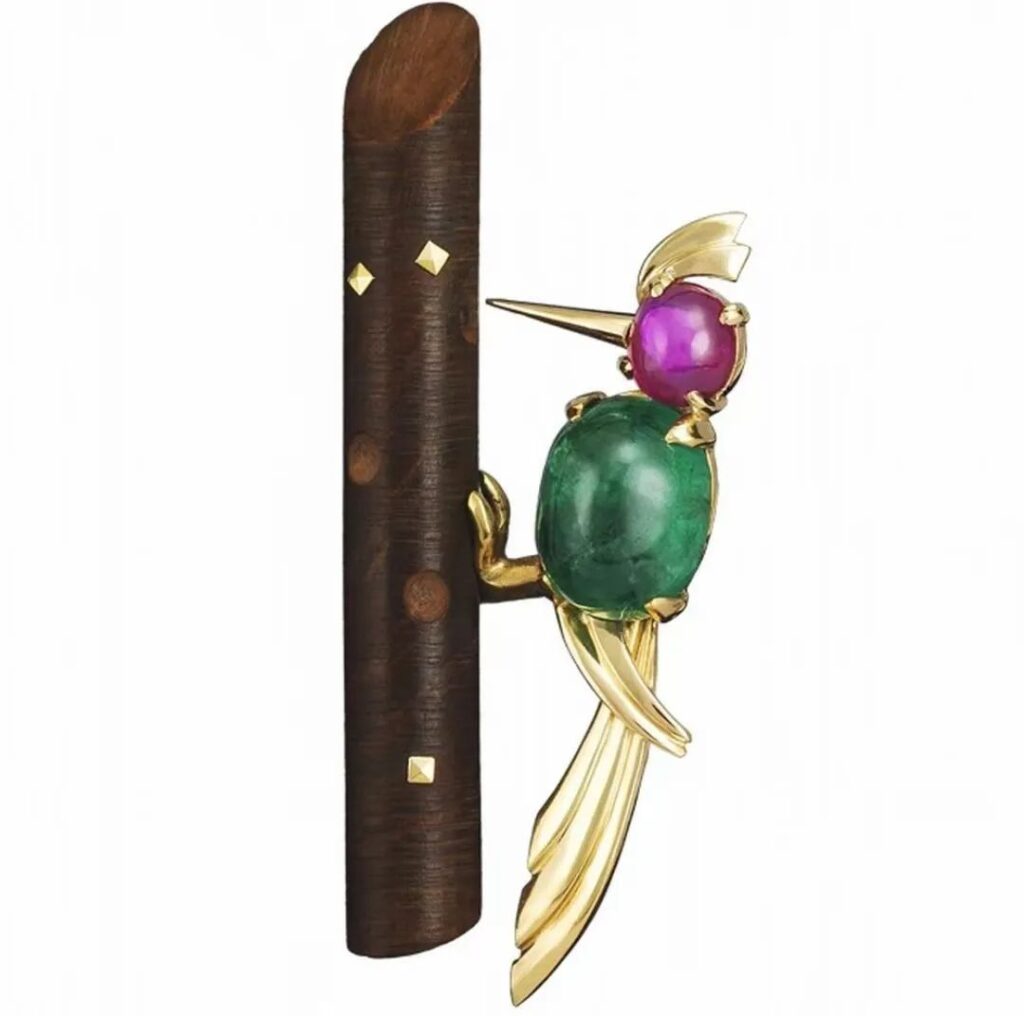
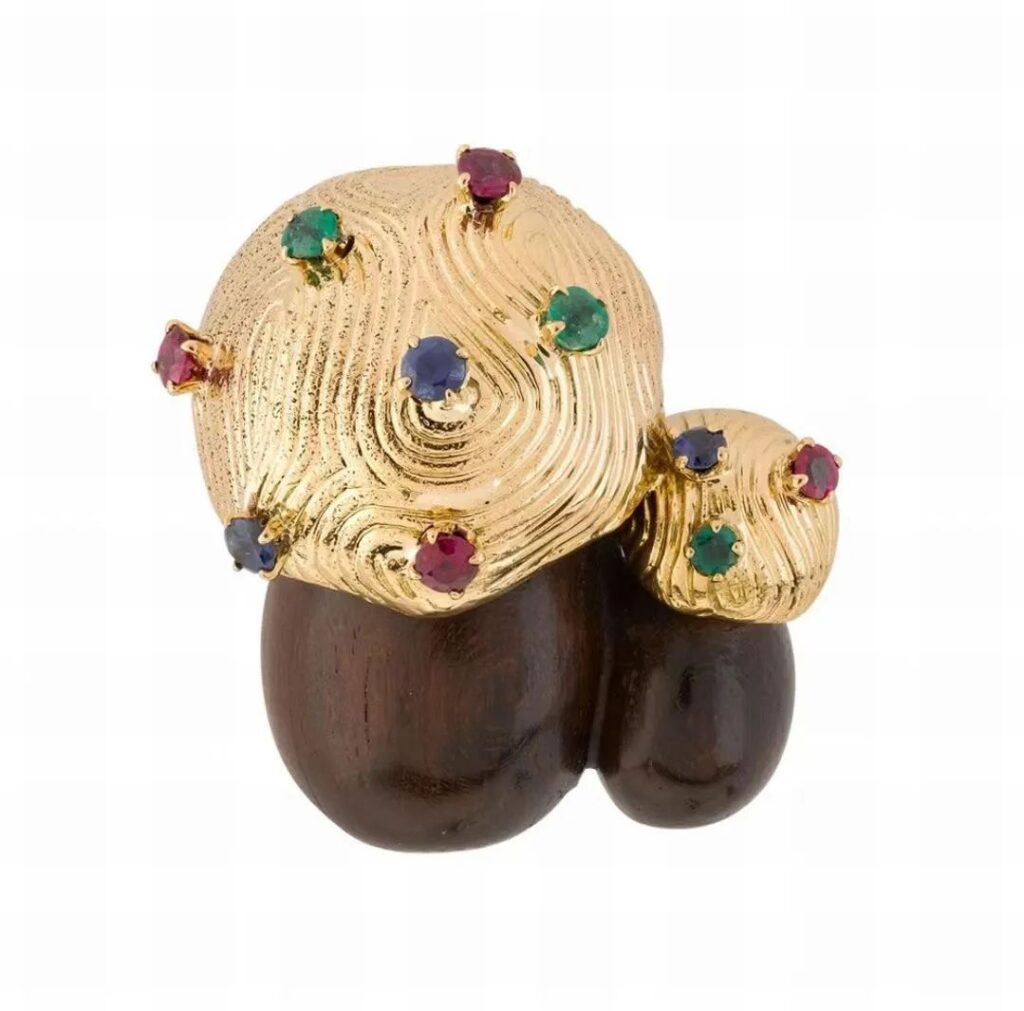
Van Cleef & Arpels draws inspiration from nature, creating naturalistic style brooches as shown above. The Woodpecker gold brooch uses natural wood to craft the tree trunk, with rubies and emeralds forming the woodpecker’s head and body.
The Mushroom gold brooch combines natural wood and gold to create two mushroom shapes, adorned with sapphires, rubies, and emeralds. The rustic texture of natural wood and the designer’s ingenious conception give viewers a sense of strolling through a natural forest when observing these two brooches.
2.The Beauty of Natural Gemstone Texture
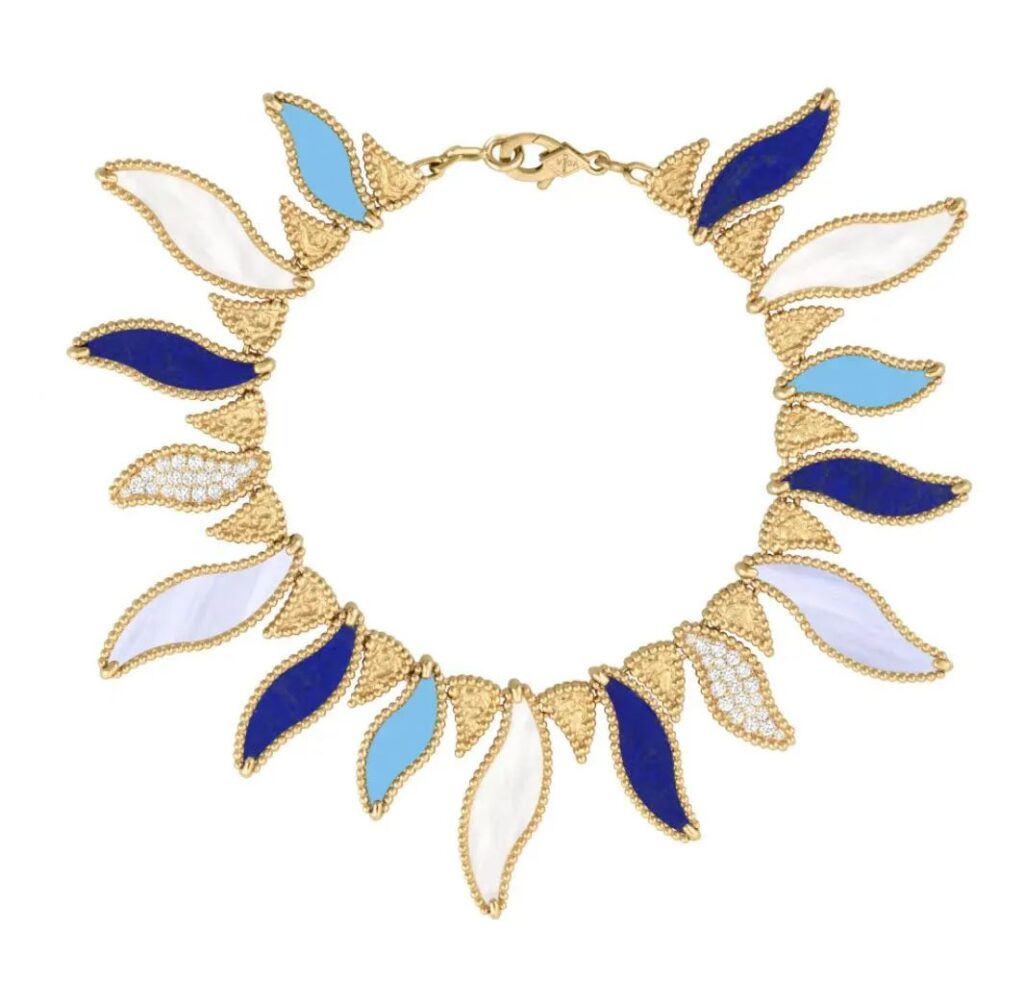
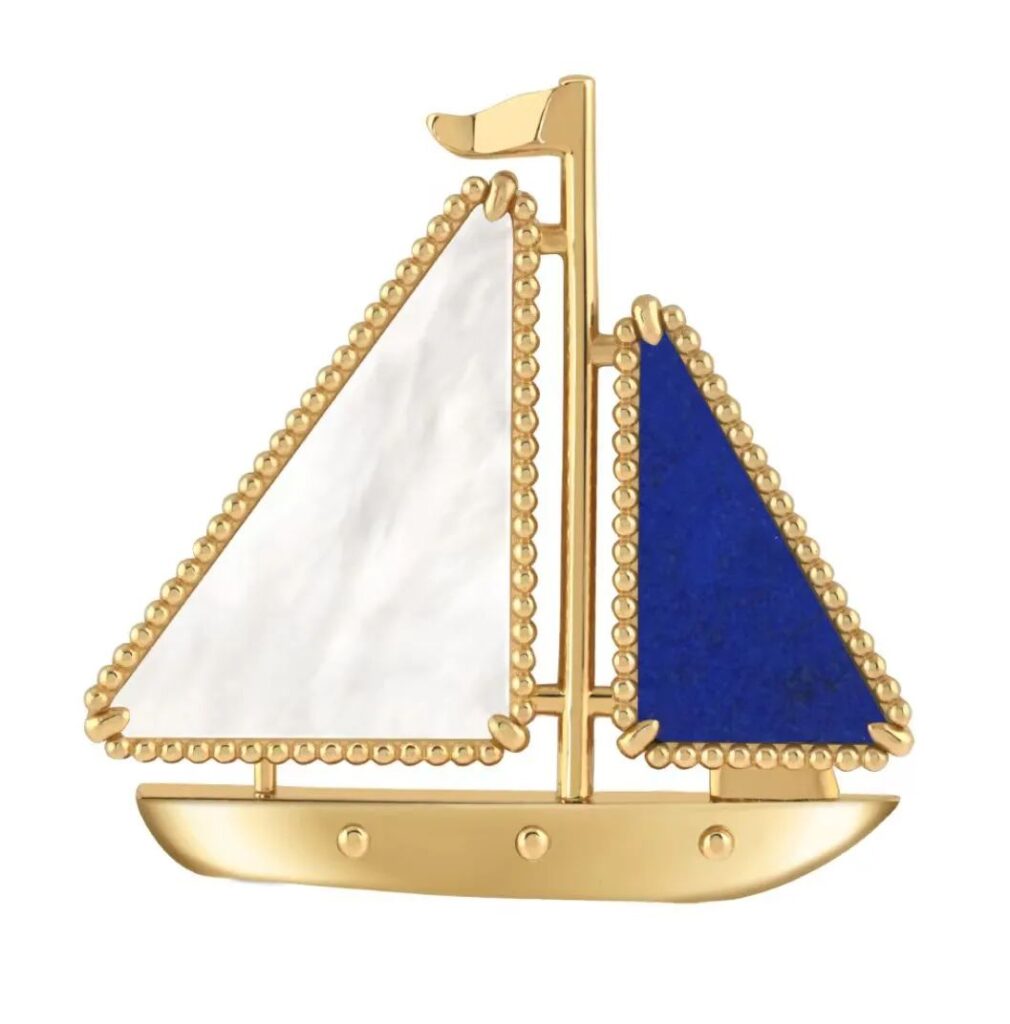
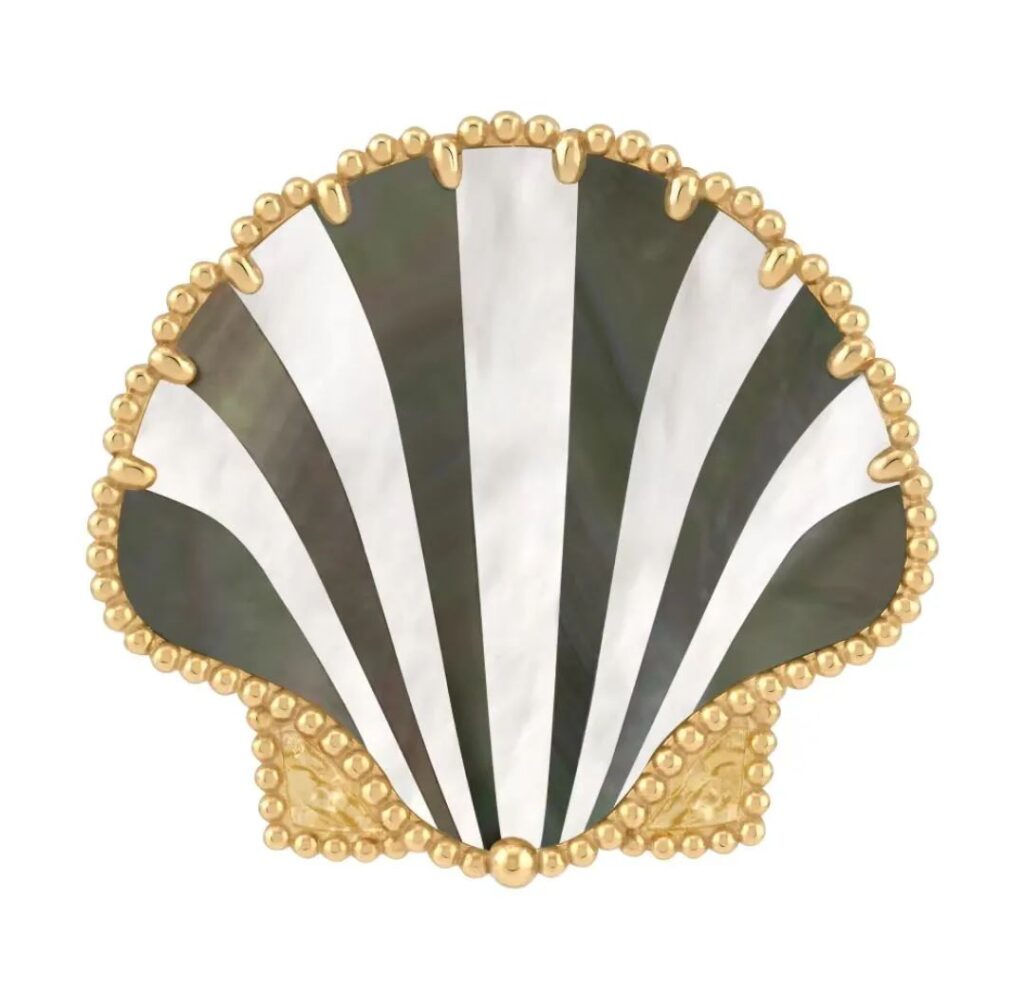
Van Cleef & Arpels‘ “Lucky Summer” collection draws inspiration from summer seaside scenery. It employs vibrant natural gemstone slices and gold bead setting techniques to create elements such as waves, sailboats, and seashells.
The Lucky Summer Wave gold bracelet uses the unique blue pattern of lapis lazuli to represent the deep sea, turquoise and chalcedony to outline the tranquil coastline, and smooth mother-of-pearl paired with diamonds to mimic sunlight shimmering on the sea surface.
The Lucky Summer Boat gold brooch uses lapis lazuli’s texture to depict deep-sea waves, while the folds of mother-of-pearl represent the sparkle on the sea surface, together forming the sail. The Lucky Summer Seashell gold brooch is composed of custom-cut white and grey mother-of-pearl to create a striped texture.
3.The Beauty of Food Waste Texture
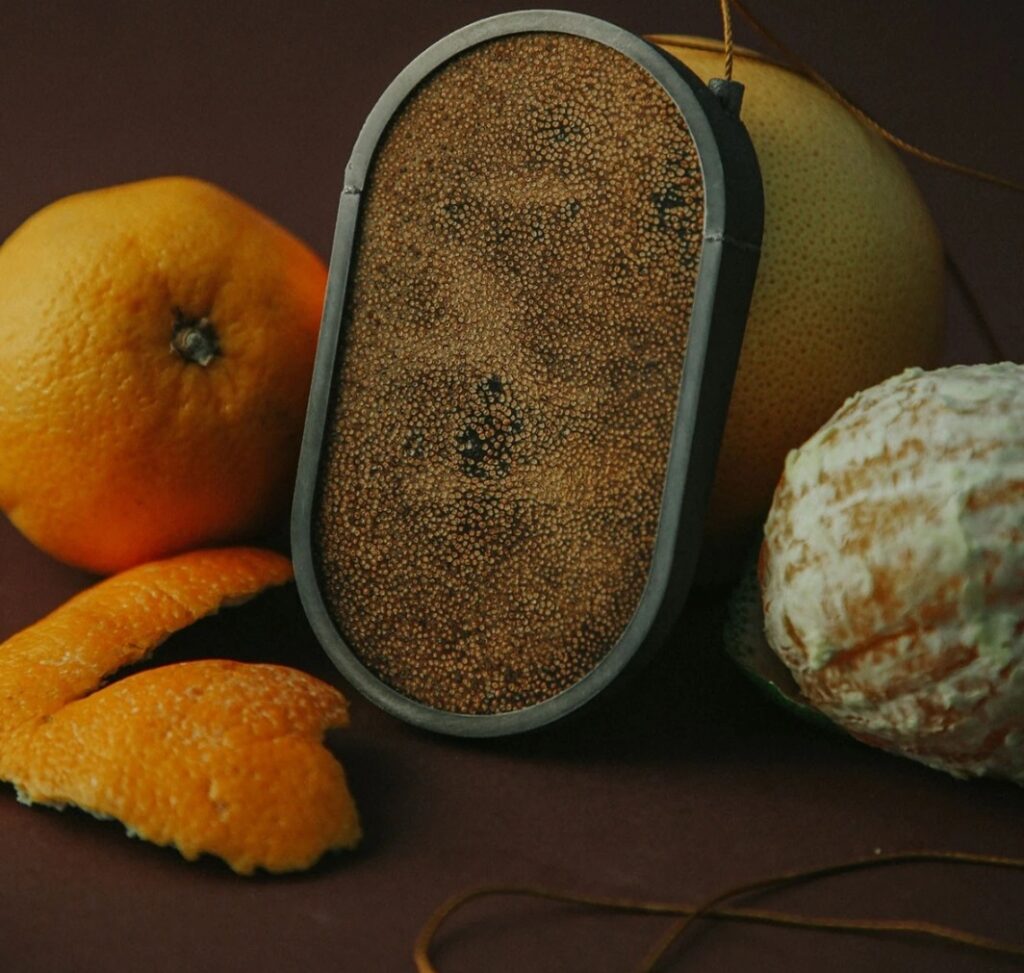
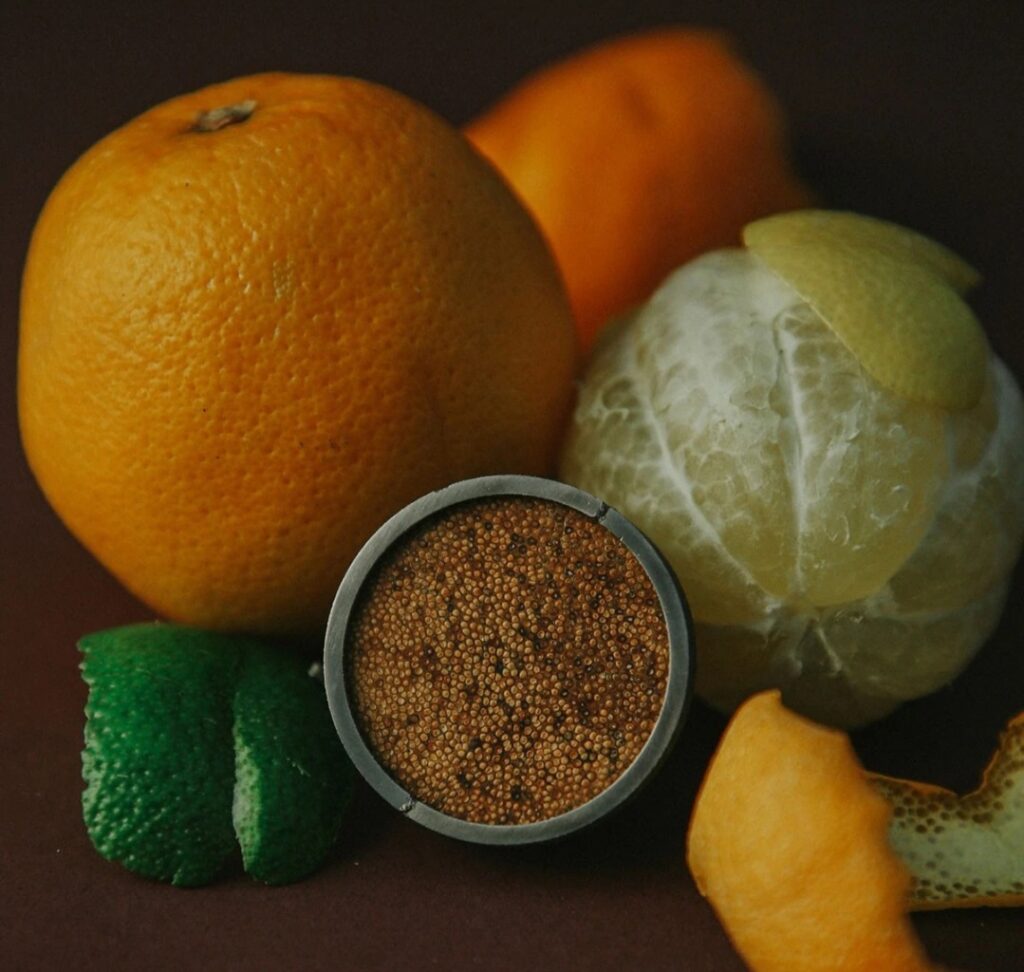
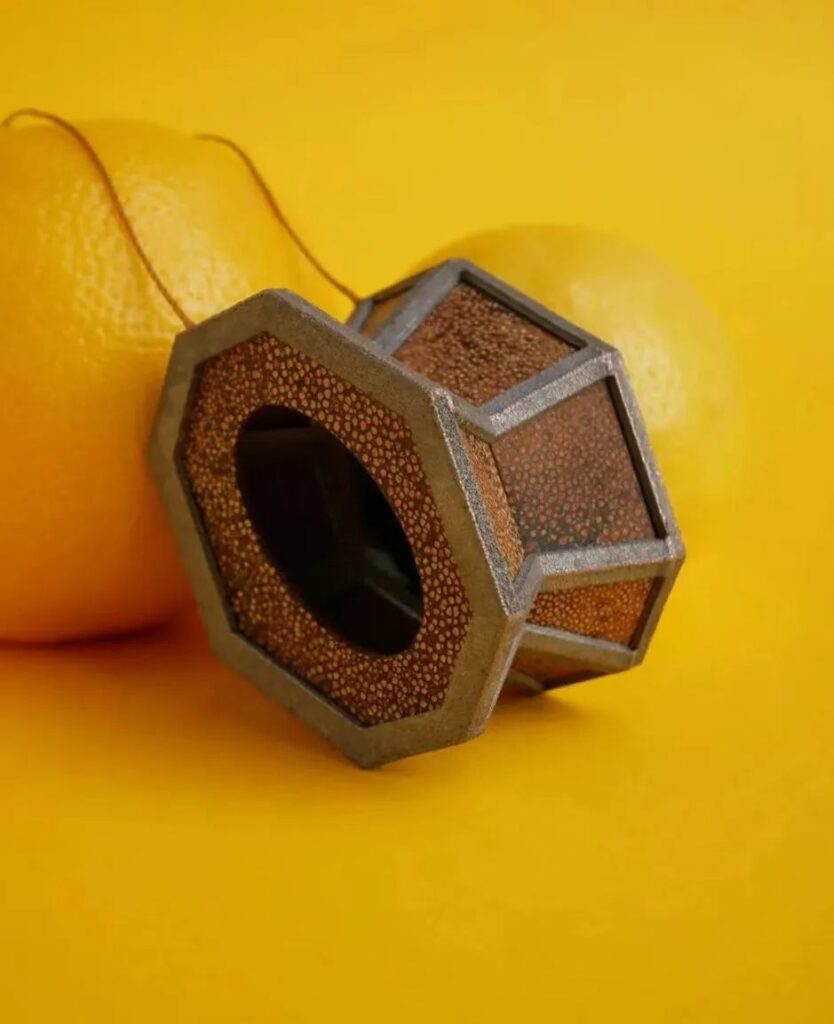
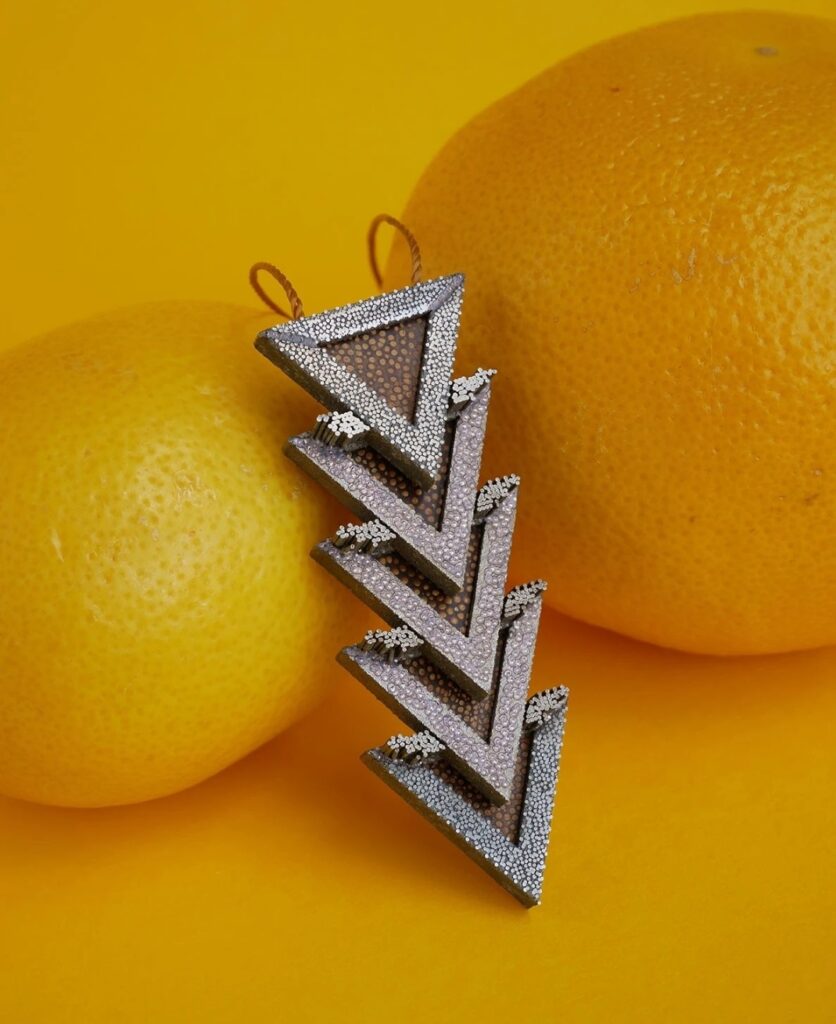
Artist Rachael Colley’s “Sha-Green” series showcases food waste in the form of discarded citrus peels. The four pieces shown are all made from citrus fruit peels, aluminum, and fabric cord. The texture on the surface of the citrus peels and the fruit fragrance they emit bring people closer to nature.
The textural elements in jewelry design not only enhance the aesthetic appeal of the pieces but also provide designers with more creative possibilities. By observing and understanding textures found in nature, designers can draw inspiration and skillfully incorporate these natural textural elements into their jewelry designs, creating pieces that possess both natural beauty and artistic craftsmanship.
Nature’s Whisper: The Allure of Texture in Jewelry Design
Tweet
